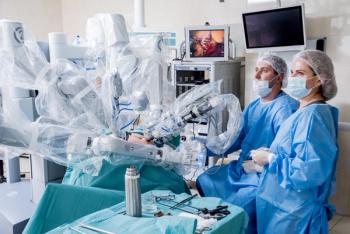
Viewpoint: Free market, posted prices can prevent healthcare sticker shock
The costs of healthcare keep increasing and patients get a surprise when the bill arrives. See what your practice can do to better inform patients of prices.
It's a Sunday night "60 Minutes" episode. A voiceover with the old, gruff voice of the late Andy Rooney says, "Did you ever notice that hospital and other medical bills equal those of small cars?"
Everyone will be a consumer of medical care, services, and equipment at some point, but over the past 50 years, through employer-based health insurance, we all have become completely removed from the actual price of medical care. Patients, even today, falsely assume that insurance companies, employers, and the government are going to take care of their health when they are in need. In fact, however, people are experiencing increasing co-pays, deductibles, and insurance premiums.
In our offices, we bear the burden of informing patients of their yearly increasing monetary responsibility, even though physicians have nothing to do with patients' insurance issues. Those under our care are also noticing that not every medical office or facility participates in their insurance plans.
A payer insuring one of my patients didn't cover a lipid panel blood test at a local hospital. When the patient received the bill, he knew he couldn't pay it and brought it in to my office to ask my opinion.
Are you sitting down? This local hospital laboratory had the audacity to charge more than $400 for a simple lipid panel. Two large labs in our area charge $90 for the same service. One local lab has a cash discount rate of $15 for the same lipid panel.
My mouth fell open, and I was silent.
Another local hospital's sleep center charges $7,500 for a sleep study in its facility. I referred a patient there, but when she came back to my office months later, I learned that she hadn't undergone the test.
Being a smart patient, she balked at the price and compared it with those of other facilities. She now had to pay a percentage of the sleep study cost instead of a co-pay, so she conducted a survey of local sleep centers.
It turns out that the hospital center that I had used routinely was the most expensive one. The cheapest study was $3,500, half the price of the test at another center.
This experience opened my eyes to the problem of medical list prices. Now I know the prices of the medications, tests, consultations, and procedures that I order. When price matters, I review with my patients the options regarding cost, quality, and location. I have a local network of physicians and testing centers that provides discounts for those who pay cash.
Newsletter
Stay informed and empowered with Medical Economics enewsletter, delivering expert insights, financial strategies, practice management tips and technology trends — tailored for today’s physicians.
















